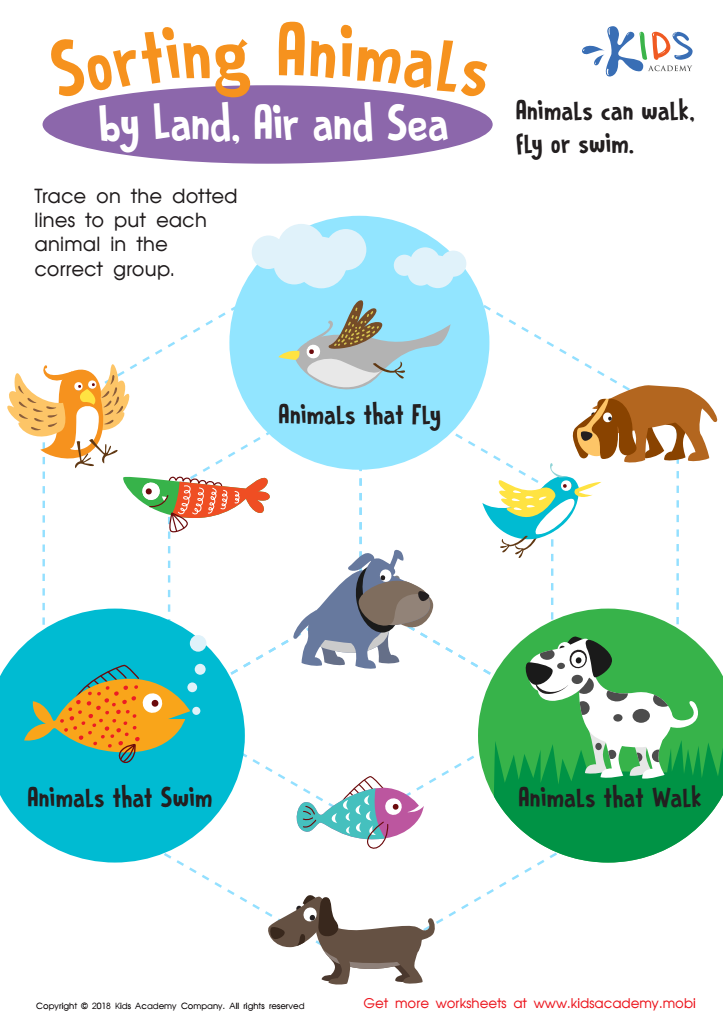Understanding habitats Worksheets for Ages 4-8
11 filtered results
-
From - To
Explore the fascinating world of habitats with our engaging worksheets designed for children ages 4-8. These fun, interactive resources aim to enhance young learners' understanding of different environments, such as forests, oceans, and deserts. Each worksheet features vibrant illustrations and age-appropriate activities that encourage kids to identify, categorize, and learn about various habitats and the creatures that inhabit them. Perfect for parents and educators alike, these printable materials promote critical thinking and literacy skills while nurturing a love for nature. Dive into the adventure of learning about ecosystems and help your child develop curiosity about the world around them!


Is this a Home? Worksheet


Sorting Animals Worksheet


Space: Assessment 1 Worksheet


Where Do We Sleep Worksheet


Land or Water Worksheet


Beaver Pond: Looking for a Solution Worksheet


Sorting Animals by Land, Air and Sea Worksheet


Sorting Animals on the Farm Worksheet


Animals and Plants: Assessment 2 Worksheet
Understanding habitats is crucial for children aged 4-8 because it fosters a deep connection to the natural world and promotes environmental awareness from an early age. At this stage, children are naturally curious and eager to explore, making it the perfect time to introduce concepts related to different habitats, like forests, oceans, and deserts. By learning about these environments, children can develop a sense of belonging and responsibility towards their surroundings.
Additionally, studying habitats encourages critical thinking and observational skills. Children learn to notice how living things interact with their environments and each other, laying the groundwork for scientific inquiry. They can explore concepts such as biodiversity and ecosystems, which are fundamental for understanding life on Earth.
Moreover, understanding habitats can enhance social skills through group activities and discussions. Collaborative learning experiences, such as building dioramas or participating in nature walks, can strengthen teamwork and communication abilities.
Inculcating a love for nature, fostering curiosity, and developing critical life skills are essential reasons parents and teachers should prioritize habitat education for young learners. This knowledge empowers children to become environmentally responsible adults who appreciate and protect the world around them.

 Assign to My Students
Assign to My Students

















